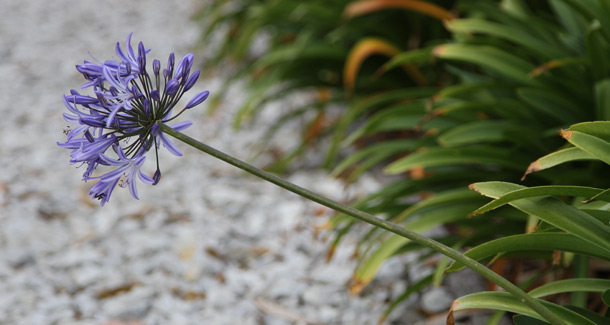The Opposite of an Ode to Agapanthus
She may have sauntered in slightly later usual, but winter has well and truly set in. I was going to pen a piece on bringing greenery into your home during the cooler months, but there is a far more pressing issue that needs to be addressed in relation to winter weather and the garden. Agapanthus. The word is italicized because I say it with narrowed eyes and a resentful lowered voice. I view the Agapanthus as less of a common garden plant and more of a malevolent villain, and I think a public service announcement is well and truly in order now that winter – its peak-predatory season – has come around.
The genus name means flower of love, from the Greek agape, meaning love, and anthos, meaning flower. Now, research suggests that significance of the name is unclear, and let’s be honest, have you ever seen a bouquet of Agapanthus gifted on Valentines Day? No, you haven’t. I suggest that Booby-trap-anthos would be a more appropriate title for this common garden-menace.
You may scoff, but let’s take a closer look at this “plant” and assess my proposal.

Favoured for its hardiness, the Agapanthus has become the plant of choice to line our driveways. This means that you can literally run over the plant with your car and it will continue to thrive. I’ve even heard rumour of the Agapanthus being atom-bomb resistant*. Once this plant is in, it is an almost impossible feat to remove, and so the torment begins.
In summer, the Agapanthus supposedly welcomes you home with a gorgeous sea of blue and white flowers. I’ll tell you who else like those big blooms, bees and spiders. In winter, rows of Agapanthus create a beautiful green vista, particularly when coated in drizzle. Translation: the Agapanthus becomes the plant version of a puddle. What’s more, the dangers of creepy crawlers and slime are not confined to the small area of the plant itself, as Agapanthus leaves are like tentacles that attack. I put it to you that if you enter within a two-metre proximity of the Agapanthus, it will somehow ruin your day. Yep, Boody-trap-anthos.
*This fact has not been verified.


